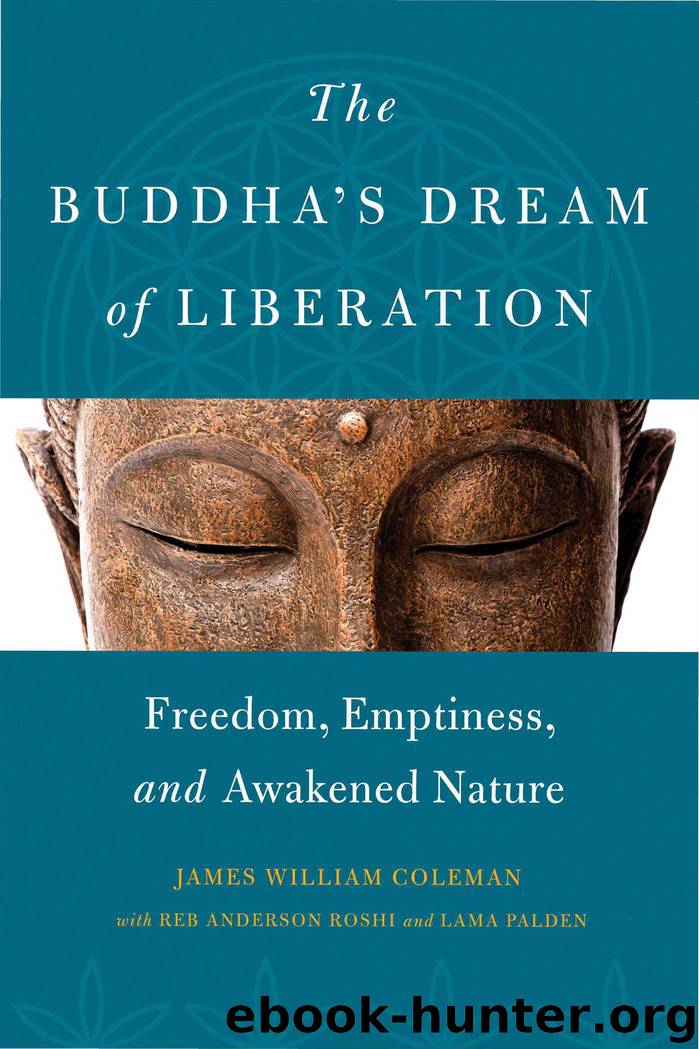The Buddha's Dream of Liberation by James William Coleman Reb Anderson palden

Author:James William Coleman, Reb Anderson, palden
Language: eng
Format: epub
Published: 2018-10-15T16:00:00+00:00
The Hidden Depths
Why is it so terribly hard for us to see things the way they really are? Where do all these delusions come from, and why do they seem to dominate our thoughts and virtually all our perceptions? A key part of the answer is to be found in the subconscious tendencies and predispositions that lie hidden in the depths of our minds. We like to think of ourselves as autonomous independent actors, rationally evaluating our options, making choices, and consciously guiding our lives through all the difficulties presented by the world. Yet for most of us, our conscious awareness is really more like a tiny circle of light in a vast mysterious night. Much of what we do and perceive is dictated by powerful forces hiding in that darkness — forces we seldom recognize, much less understand.
The Abhidharma had no concept of the unconscious. It wasn’t until the third turning of the wheel that Buddhist psychology recognized the importance of the unseen depths below our conscious awareness, but that was still long before the concept of the unconscious mind ever came into Western culture. As we have seen, the Sutra of the Explanation of the Profound Secrets calls this aspect of mind the alaya vijnana — a term that is frequently translated as “storehouse consciousness,” “all-base consciousness” or “substrate consciousness,” but etymologically it also carries the connotation of “clinging” or “attachment.” 87 The sutra uses several other names for the unconscious as well; for instance, it is first mentioned simply as “the mind that has all the seeds.”
The Sutra of the Explanation of the Profound Secrets never systematically describes this “mind that has all the seeds,” but it does list a number of its basic characteristics that were later worked into a more complete picture. In its deepest nature, mind is pure undefiled suchness — uncreated, unending, and beyond all conceptualization — but in its manifestation as the alaya vijnana, it is also permeated by the seeds of delusion. The alaya provides the foundation for all the other aspects of mind and body. In one respect, it is the vivifying principle that brings energy to the body, something like the Chinese concept of chi or the Freudian id. But it goes far beyond these, for it is also the aspect of mind that continues from life to life and “appropriates a new body during the process of death and rebirth.” 88 The alaya also provides the foundation for all other types of consciousness and therefore for all experience, and it is here that we get our deluded tendency to see the world in terms of self and other.
But the alaya vijnana is not just the basis of our experience, it is also a result of our experience. Our thoughts and actions lay down seeds that permeate the alaya and give us new tendencies for future thoughts and actions. Thus each individual’s storehouse has both a unique individual character and a universal character that is shared with everyone else 89 — something like Carl Jung’s idea of the collective unconscious.
Download
This site does not store any files on its server. We only index and link to content provided by other sites. Please contact the content providers to delete copyright contents if any and email us, we'll remove relevant links or contents immediately.
The Way of Zen by Alan W. Watts(6509)
Ego Is the Enemy by Ryan Holiday(5295)
The Art of Happiness by The Dalai Lama(4063)
The Book of Joy by Dalai Lama(3903)
Why Buddhism is True by Robert Wright(3404)
Spark Joy by Marie Kondo(3251)
Shift into Freedom by Loch Kelly(3134)
Happiness by Matthieu Ricard(2993)
A Monk's Guide to a Clean House and Mind by Shoukei Matsumoto(2870)
The Lost Art of Good Conversation by Sakyong Mipham(2578)
The Meaning of the Library by unknow(2506)
The Unfettered Mind: Writings from a Zen Master to a Master Swordsman by Takuan Soho(2249)
The Third Eye by T. Lobsang Rampa(2226)
Anthology by T J(2162)
Red Shambhala by Andrei Znamenski(2154)
The Diamond Cutter by Geshe Michael Roach(2022)
Thoughts Without A Thinker: Psychotherapy from a Buddhist Perspective by Epstein Mark(1961)
Twilight of Idols and Anti-Christ by Friedrich Nietzsche(1850)
Advice Not Given by Mark Epstein(1839)
